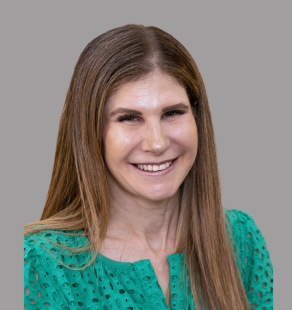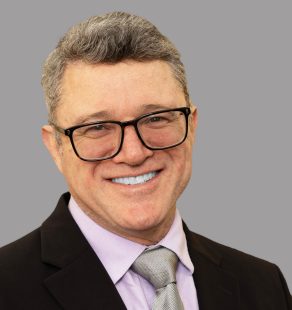Spine Care is important for our overall wellbeing. We all experience back or neck pain at some point and a majority of adults actually experience ongoing symptoms of pain or stiffness without ever seeking treatment. At Union County Orthopaedic Group, we take all spine issues seriously, from sudden injuries to the minor strains and tightness that can affect your daily life.
Union County Orthopaedic Group provides the most comprehensive spine care by our top-rated back, neck, and spine specialists. Our physical medicine and rehabilitation physicians approach back and neck treatment through conservative, non-surgical means, such as physical therapy and interventional pain management. Each of our board-certified experts have years of experience in pinpointing spinal issues and providing relief for both acute and chronic pain. At Union County Orthopaedic Group, patients who have had ongoing back and neck pain find the knowledge and guidance needed to regain a pain free lifestyle and overall wellness. Nathaniel Sutain, MD and Naomi Gold, DO, help patients manage back and neck issues with conservative, interventional pain management techniques, which relieve painful and disruptive symptoms of spinal conditions, without using oral medications that could have adverse side effects.
The top rated back and neck specialists at Union Country Orthopaedic Group, offer the highest quality spine care, helping patients throughout the New Jersey and New York area find the pain relief they need for a better life.
Back & Neck: Injuries & Conditions
- Arthritis/Osteoarthritis
- Radiculopathy (Radiating Pain)
- Cervicalgia (Neck Pain)
- Complex Regional Pain Syndrome
- Degenerative Disc Disease
- Disc Herniation
- Facet Joint Syndrome
- Failed Back and Neck Syndrome
- Lumbago (Lower Back Pain)
- Numbness/Tingling
- Sacroiliitis
- Sciatica
- Spinal Stenosis
- Spondlyosis
- Strains/Spasms
- Thoracic (Mid-Back) Pain
- Whiplash
Diagnosis & Treatment: Back & Neck Conditions
- Interventional Pain Management
- Epidural Injections
- Facet Joint Injections
- Selective Nerve Root Block
- Medial Branch Radiofrequency Ablation
- Sympathetic Nerve Block
- Pain Management
- Trigger Point Injections
- Acupuncture
- Physical and Sports Rehabilitation
- EMG and Nerve Conduction Studies
Anatomy of the Spine:
Our spine is the source and support for all bodily operations. The back and neck house the skeletal structure of the spine as well as all of the nerve roots that branch out to the rest of our body. Within the spinal region are vital blood vessels and nerves, as well as ligaments, tendons, and muscles. Each of these components are responsible for everything from wiggling our toes to releasing hormones, to perceiving pain. Being such a complex structure that we use for every bodily function, our spine is highly susceptible to a variety of ailments such as damage from physical trauma, nerve dysfunction, or musculoskeletal diseases. Understanding the spinal design is the first step towards realizing how it affects all aspects of life.
Joints:
The spinal skeleton is made up of stacked bones called vertebrae. There are 17 vertebrae in the back and seven cervical vertebrae. Each articulated vertebrae is attached to the one above and below it via a facet joint on each of their sides, making the spine a flexible support structure that allows us to move while still bearing the weight of our head and torso.
Each vertebral bone has a cylinder with a hole through its middle called the spinal canal. This is where the spinal cord, which is a bunch of nerves that originate in the brain, runs through the spine. The all-important nerves are protected by this bony canal. Each vertebrae also has a bony protrusion called the vertebral arch, which is the pointy part of your spine you can feel along your back. Two wing-like protrusions at either side of the bones are the connecting facet joints that hold the spine together and allow us to bend and twist.
In between each vertebrae is a slippery, rubbery sac called a bursa. This spinal discs are integral to buffering the vertebrae so they do not rub against each other under the weight of our bodies. Many factors, such as poor posture, straining our backs and necks, or disease, can damage or herniate these discs, leading to a number of spinal issues.
Our spines have 5 main parts, that together form “S” shaped curves that absorb shock and help us maintain our balance.
- Cervical Spine – Our neck contains the vertebrae numbered C1 to C7. This portion of the spine supports and moves our skulls. It curves naturally inward towards our throat in a formation known as lordosis.
- Thoracic Spine – Our mid-back, otherwise known as the thoracic spine, includes vertebrae T1 through T12. This portion of our back is mainly responsible for holding the ribcage in place to protect the heart and lungs. It curves outward naturally in kyphosis, but this curve can be exaggerated due to poor posture, as a hunched back.
- Lumbar Spine – The lower back has 5 large lumbar vertebrae, L1 through L5. This portion of the spine bears the weight of the body and again curves inward toward the body in lordosis.
- Sacrum – The main function of the sacrum is to connect the spinal column with our hip bones. While the sacrum has 5 vertebrae, they are fused together without facet joints as the other vertebrae are.
- Coccyx Region – The coccyx portion of the spine also has 4 vertebrae fused together. This is where the pelvic floor connects to the spine and hips. It ends in the tailbone.
Muscles & Tendons:
Two muscle groups in our back keep our spine aligned. The extensor muscles are attached to the back of our spine. They help us lift objects. The flexors, which include our abdominal muscles, attach to the front of the spine and help us bend forward and stay balanced. These muscle groups are attached to bone via tough, fibrous tendons.
If these muscles are not strengthened or are pulled on by something as simple as poor posture or extra body fat, they destabilize the spine by putting heavy strain on the vertebrae. When these muscles pull the vertebrae out of alignment, the spinal cord and the encompassed nerve roots are compromised, causing pain and other potentially severe back and neck problems.
Spinal Cord & Nerve Roots:
The spinal cord and nerve roots within the spine connect to the brain to make up the Central Nervous System. One of the spine’s main jobs is to protect this spinal cord and its nerve roots as they branch out to the rest of the body. 31 nerve roots pass through the spinal canal and separate into thousands of pathways throughout the body, making the Periphery Nervous System.
The spinal cord is an 18-inch long cord about the thickness of our thumbs that begins at the base of our brains and runs through the spinal canal made by our vertebrae. It is the medium of communication between the brain and body. The brain sends motor messages to our body to make it move, while our sensory nerves send messages back to the brain that allow us to feel. The spinal canal is filled with cerebrospinal fluid to further protect it from impact. This fluid is held within a spinal capsule formed by the ligaments that support the spinal structure and hold our vertebrae together.
Compressing the spinal cord and its nerves within the spinal canal can cause nerve dysfunction. Because it is the hub of all neural communication to the brain, severe injuries to the back and neck can cause paralysis, or the inability to move and feel your limbs.
In most cases however, the spinal cord or nerve roots are compressed due to very common causes such as poor posture or muscle strain while lifting. Diseases, such as degenerative disc disease or arthritis, can also cause compression. Muscle strain and tightness irritates nerves, sending pain signals to the brain. Inflammation can occur, causing the spinal cord to rub against the walls of the spinal canal, also sending off pain signals. Sometimes, this leads to numbness or tingling in our limbs if a particular nerve root is especially irritated. Oftentimes, these symptoms can be relieved using rehabilitation techniques like physical therapy or acupuncture, or interventional pain management management techniques like spine injections.



